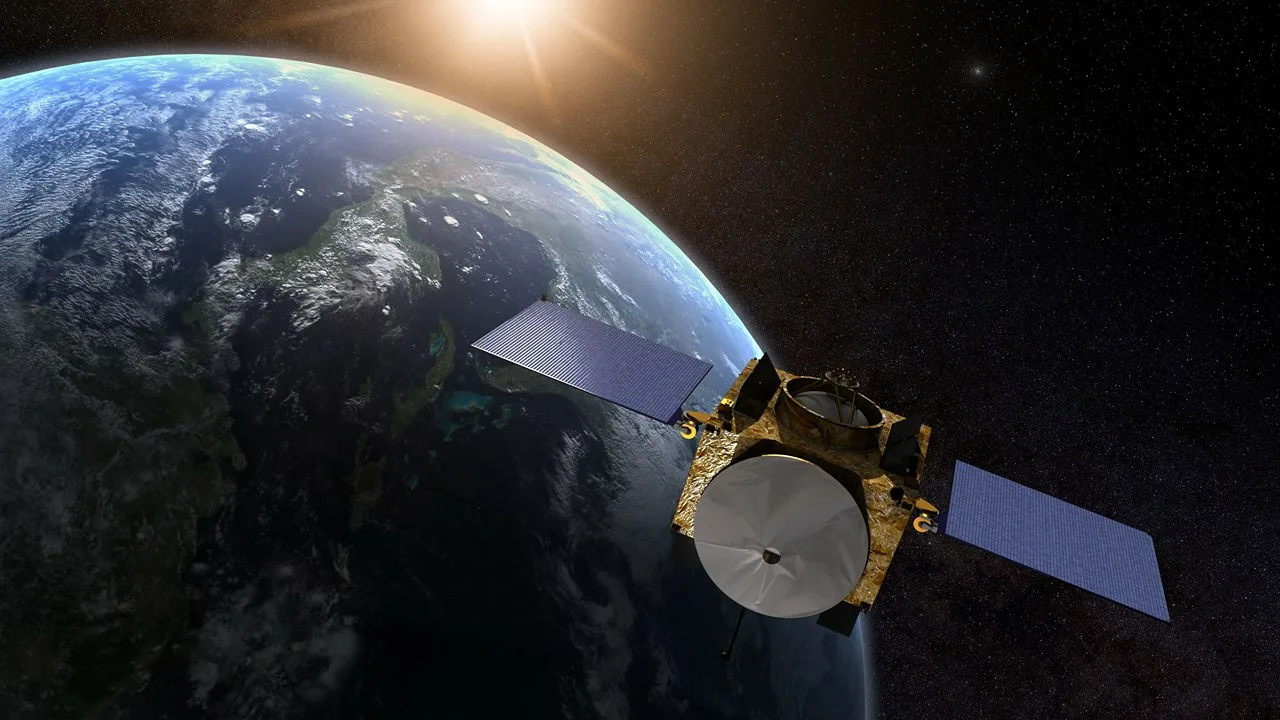Small Satellite Market Overview: The Future of Space-Based Services and Advancements in Satellite Technologies

Introduction
The small satellite market is rapidly transforming the global space industry, driven by technological advancements and expanding applications in Earth observation, communication, scientific research, and defense. The increasing demand for low-cost, high-performance satellites, coupled with the rise of CubeSats, nano-satellites, and micro-satellites, is reshaping the future of space-based services. This article provides an in-depth overview of the small satellite market, highlighting future opportunities, key technological innovations, and market growth trends.
Growth of the Small Satellite Market
Increasing Demand for Low-Cost Satellite Solutions
The small satellite industry has seen remarkable growth due to the rising need for cost-effective, rapid-deployment solutions in both commercial and government sectors. Unlike traditional satellites, small satellites offer faster development cycles, lower launch costs, and flexible mission capabilities. This affordability has attracted private investors, startups, and space agencies looking to expand their presence in orbit.
Expansion of Satellite Constellations
The development of mega-constellations by companies such as SpaceX, OneWeb, and Amazon’s Project Kuiper is driving the deployment of thousands of small satellites in low Earth orbit (LEO). These satellite networks are designed to provide global broadband coverage, real-time Earth monitoring, and enhanced IoT connectivity, ensuring seamless communication services worldwide.
Rise of Commercial Space Investments
Private-sector investments in the small satellite market have increased significantly, fueling research, innovation, and new business models. Governments and commercial enterprises are partnering with satellite manufacturers, launch service providers, and AI-driven analytics firms to enhance their capabilities in remote sensing, navigation, and telecommunications.
Key Technological Advancements
Miniaturization of Satellite Components
Breakthroughs in microelectronics, nanotechnology, and material sciences have enabled the development of compact, lightweight, and energy-efficient small satellites. These advancements allow small satellites to deliver high-resolution imaging, advanced scientific measurements, and secure communications at a fraction of the cost of traditional satellite systems.
AI and Machine Learning in Satellite Operations
The integration of artificial intelligence (AI) and machine learning (ML) is enhancing autonomous operations, real-time data analysis, and predictive maintenance of small satellites. AI-driven image processing, anomaly detection, and automated orbit adjustments improve mission efficiency and reduce reliance on ground stations.
Advanced Propulsion Systems
New propulsion technologies, such as electric propulsion, ion thrusters, and green fuel alternatives, are improving the maneuverability and lifespan of small satellites. These innovations are crucial for long-duration space missions, deep-space exploration, and interplanetary research.
High-Speed Inter-Satellite Communication
The implementation of laser communication systems and quantum encryption in small satellite networks is revolutionizing data transmission security, speed, and reliability. These advancements play a crucial role in global telecommunications, military applications, and secure government communications.
Applications of Small Satellites in Space-Based Services
Earth Observation and Remote Sensing
Small satellites are widely used for environmental monitoring, disaster response, and climate change analysis. High-resolution Earth imaging helps in urban planning, agriculture, forestry, and ocean monitoring, providing valuable data for scientific research and government policies.
Global Broadband and IoT Connectivity
The growing demand for high-speed internet and IoT networks in remote and underserved regions is driving the deployment of LEO small satellite constellations. These satellites enable global broadband access, smart city applications, and real-time industrial monitoring, supporting advancements in telecommunication and IoT infrastructure.
Defense and National Security Applications
Governments and defense organizations are leveraging small satellite technologies for intelligence, surveillance, reconnaissance (ISR), and secure military communication. The ability to deploy, replace, and upgrade small satellites quickly makes them ideal for strategic defense applications.
Scientific Research and Space Exploration
Small satellites play a critical role in deep-space exploration, planetary research, and space weather monitoring. Space agencies such as NASA, ESA, and ISRO are using CubeSats and nano-satellites for missions beyond Earth, including lunar exploration, Mars rovers, and asteroid mapping.
Challenges in the Small Satellite Market
Space Debris and Orbital Congestion
The increasing number of small satellites in orbit raises concerns about space debris and collision risks. Regulatory agencies and private companies are investing in active debris removal (ADR) solutions, sustainable satellite designs, and end-of-life disposal strategies to ensure long-term sustainability in space operations.
Regulatory and Spectrum Allocation Issues
As the small satellite industry grows, regulatory challenges related to radio frequency allocation, licensing, and space traffic management must be addressed. Governments and international organizations are working on standardized frameworks to ensure fair access to orbital slots and communication spectrums.
Cybersecurity Risks
With increasing reliance on satellite-based communication and data transmission, cybersecurity threats such as hacking, signal jamming, and data breaches pose significant risks. Advances in quantum encryption, AI-based anomaly detection, and secure cloud-based data storage are being developed to counteract these threats.
High Initial Investment Costs
Despite lower launch and manufacturing costs, small satellite development still requires substantial R&D investment, infrastructure, and expertise. New entrants in the market must secure funding, technological partnerships, and competitive business models to sustain growth.
Future Prospects and Market Opportunities
-
Integration of small satellites with 5G networks for seamless global communication.
-
Advancements in AI-driven autonomous satellite constellations for real-time data processing.
-
Expansion of small satellites in deep-space exploration, including Moon, Mars, and asteroid missions.
-
Development of reusable launch systems and space-based manufacturing solutions.
-
Emergence of hybrid satellite-terrestrial networks to enhance connectivity in smart cities and industries.
Conclusion
The small satellite market is set to redefine space-based services, with advancements in miniaturization, AI, propulsion, and secure communication technologies paving the way for future innovations. While challenges such as space debris, regulatory frameworks, and cybersecurity risks remain, continued investment and research are shaping a sustainable, interconnected, and highly efficient satellite ecosystem. As governments, private enterprises, and space agencies collaborate on next-generation satellite solutions, the future of space exploration, communication, and Earth observation looks more promising than ever.
- Art
- Causes
- Crafts
- Dance
- Drinks
- Film
- Fitness
- Food
- Games
- Gardening
- Health
- Home
- Literature
- Music
- Networking
- Other
- Party
- Religion
- Shopping
- Sports
- Theater
- Wellness


